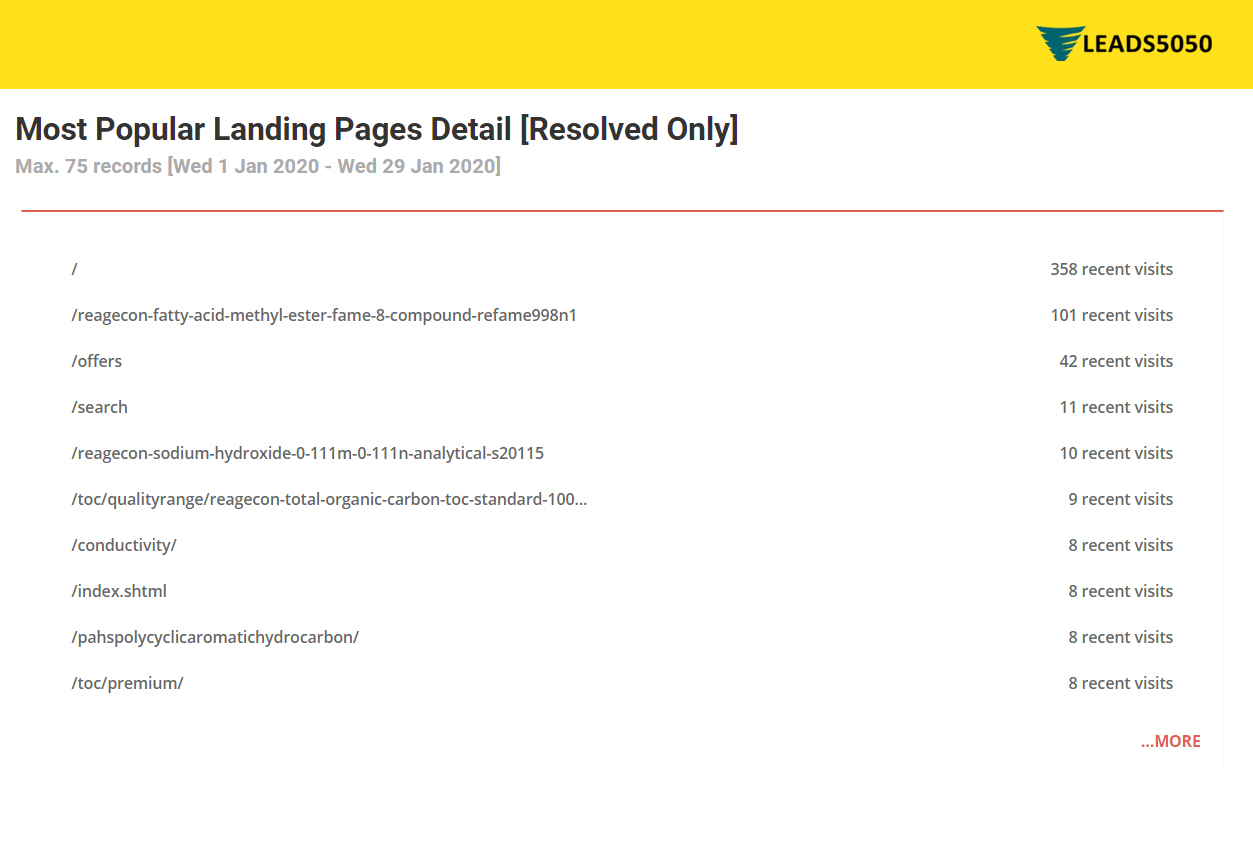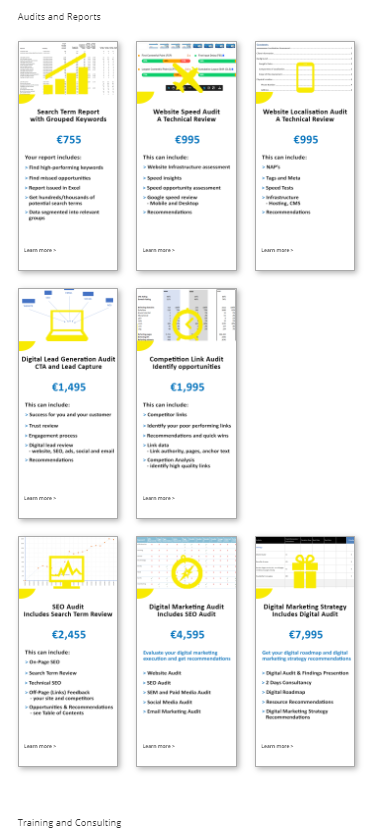Removing and Repurposing Underperforming Pages
If you have been using Leads5050 you may be seeking ways to improve certain posts, your ranking, landing pages and time on site etc. Leads5050 provide valuable insights into what potential leads are doing on your site, where they come from and what content they are consuming. Removing underperforming content may help both your lead engagement and SEO.
You may notice that with time, older content or underutilized content is receiving fewer views, comments, and shares, and subsequently ranking lower on the web. At this point, the best method would be to re-optimize or update the content to make it more relevant.
However, some content can’t be effectively re-optimized no matter how much you try. For instance, you may have posted an announcement about an event that happened a long time ago and now almost nobody views the page. Apart from receiving zero new engagements, such posts are functionally useless and it’s pointless to keep them on your site.
But what to do with the content, should you remove it permanently, repurpose the content and how can this help with future lead generation?
Pros and Cons of Removing Underperforming Content
As you consider what to do with your underperforming posts and web pages, here are some pros and cons of content removal and what you can do with the information you still feel is relevant.
Pros of removing web pages and posts
- It Boosts Your SEO Rankings
Search engine algorithms are programmed to send users to the most relevant and valuable information on your site. Often, newer, more up-to-date posts are shown first. Search engines also consider the overall quality of a given website before ranking it on the front page.
Having tens or hundreds of outdated posts will have you ranking low for the respective keyword searches for these posts. It will also affect the SEO rankings of your newer content. Archiving underperforming pages will keep your website fresh both in the eyes of search engines and readers.
- It’s Easier Than Constant Re-optimizing
Certain posts, particularly ones that quote statistics and require regular updating and re-optimizing to stay competitive may not be as relevant to your readers as you think.
If this information is vital to your business, it may be better to repurpose this information into emails or newsletters for prospective leads. Use CTAs within these emails to then direct readers to your site.
Use the tools within leads5050 to see if such content is read when produced for your site, if not aim you may be better off using this time to focus on more important aspects of your site.
- It Keeps Your Site Looking Well Maintained
If you only update your blog and/or website a few times a month, there may come a point where older content outnumbers newer content. This affects the overall traffic as tools such as the Google Quality Deserves Freshness (QDF) algorithm – one of its oldest algorithms – prioritizes newer content over older content. You need to always keep the number of new posts (less than a year old) higher than that of older ones.
Certain cornerstone pages and blogs will always bring in the most traffic to your site. It’s important to study these, analyze what is working on these pages and how you can create new content to complement these. Popular pages, frequent visitors and the channels used to find your site are great indicators of what works on your site.
Cons of removing underperforming posts
- Content Deletion is a Waste of Effort
Some content may be underperforming in the rankings and reader engagement fronts while remaining relevant to some readers. You may have written a 400-word article on a topic specific to certain readers who return to consume the content. Although not huge in traffic terms, such content can create loyalty and trust in your business knowledge about certain topics.
Removing such articles would not only make you lose the little traffic you receive from it but would also be a waste of the time and effort it took you to write it.
- Broken Links Are Costly
If you do a lot of internal linking, deleting content may lead to users experiencing “410 deleted” responses when accessing your site. Many visitors will leave within seconds of receiving the response, which will lead Google algorithms to consider your website’s content to be of low quality.
It’s important when removing or repurposing content that the link structure is kept intact or at least redirect properly.
How to Remove Underperforming Pages
Removing content that you’ve identified as outdated, and underperforming is quite simple. The first thing you need to do is edit the post(s) to remove any relevant backlinks therein. Then delete or archive the content.
Immediately after deleting or archiving the content, you need to set up a redirect (known as a 301) so that visitors who land on the deleted URLs are redirected to more relevant articles.
If you’re not technically astute, you can use the free WordPress Redirection Plugin for this. Alternatively, you can implement 404 ‘not found’ or 410 ‘content missing’ responses. The latter is what Google recommends as they give the users more freedom on how to proceed after the error message.
How to repurpose underperforming posts:
Use the tools available to you to determine the articles you deem relevant but underperforming. Repurpose the information into newsletters, ads, content summaries etc. and have CTA’s and links to relevant pages therein.
Expand on the pages, update relevant information, check that links are correctly placed and working and republish the content when the time is right.
If the content is not worth the effort, archive the pages and content and focus your efforts on the pages that bring you traffic, have high engagement and meet your business goals.
Ultimately choosing to delete or archive information on your site comes with effort and research to determine how it will affect your overall site.
Knowing what content works on your site is key to increasing traffic, brand awareness and trust for your business. Again, removing underperforming content may help both your lead engagement and SEO.

